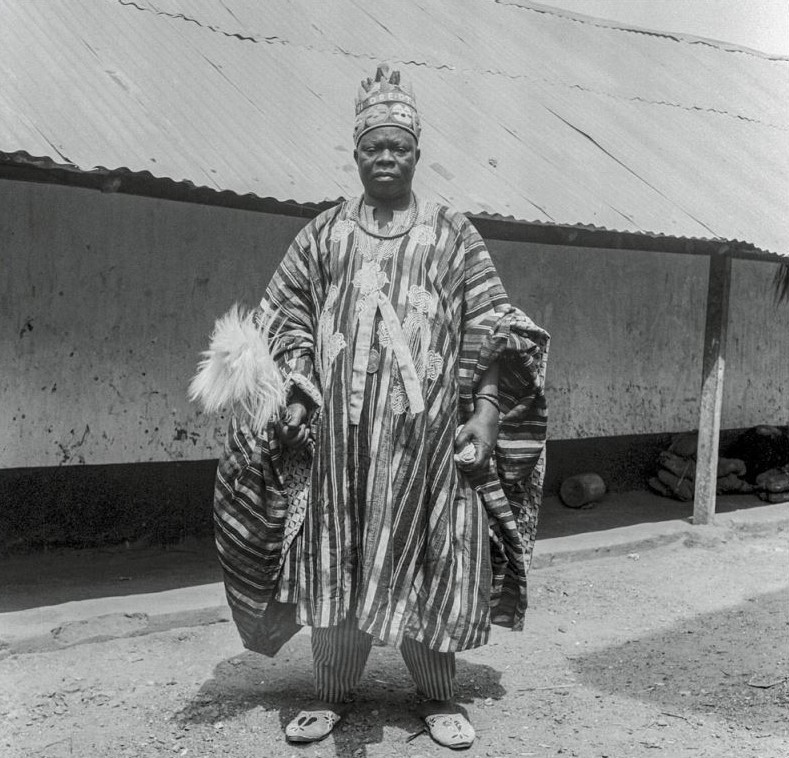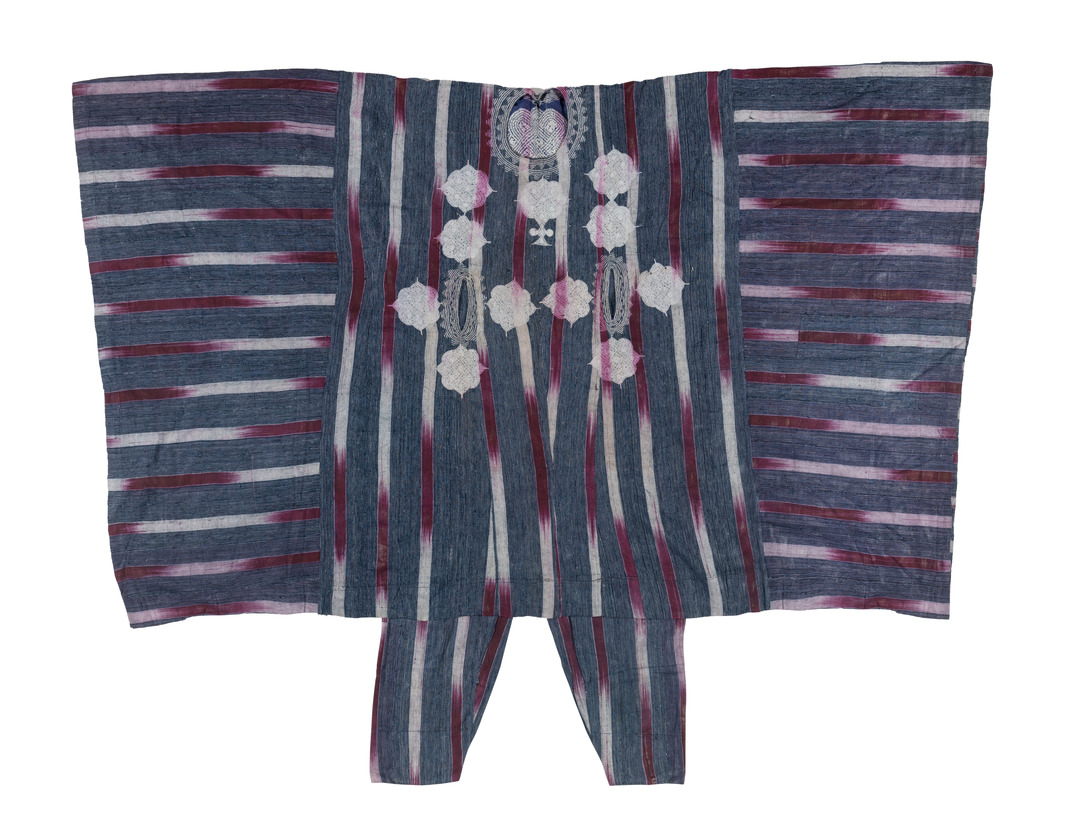Inside SAM’s World of Compelling Cloth: Agbada
Not all of the stops on SAM’s smartphone tour of Ikat: A World of Compelling Cloth feature artist interviews and other audio content. Some stops, such as this one focused on a traditional Yoruba agbada, offers additional exhibition information via pictures and text accompanied by a verbal description of the artwork on view. Look below to learn about the importance of these traditional men’s tunics and how they’re made. Browse through all seven stops of the exhibition’s free smartphone tour and listen to its thirteen available verbal descriptions now, then purchase your tickets to see the exhibition at SAM’s downtown location before it closes on Monday, May 29.

What is an Abgada?
An agbada is a long, flowing robe with wide sleeves worn by men in some parts of West Africa, often decorated with embroidery. Traditionally, agbada were prestigious garments associated with royalty. These days, agbada are more common with a wide variety of styles to fit the occasion.

What is Aso-Oke?
Agbada are traditionally made from Aso-Oke fabric, which is a hand-loomed cotton cloth of the Yoruba people in Nigeria. The style of Aso-Oke fabric featured on the garment in this gallery is known as ‘Etu,’ which is made to imitate the striped blue and white colors of the Guinea Fowl for which it is named.
Verbal Description of Agbada
This garment is called an agbada—spelled A-G-B-A-D-A—which is the Yoruba word for a men’s tunic. This garment dates from the early 20th century. The garment is exceptionally oversized to create a strong impression, as it measures four and a half feet tall by five feet wide. The agbada is Aso-Oke strip-woven, which is a Yoruba term that specifically describes this type of handwoven cloth, which incorporates cotton, ikat, and cotton hand-embroidery. The base fabric in this garment is a dark blue cotton, resembling denim. Layering over the blue cotton are thinner strips that gradually shift from red to white. The stripes are vertical on the bodice of the garment, but horizontal on the sleeves. At the center of the garment, are two pockets for resting your hands, like the pockets on a hoodie. Along the neckline, adorning the front of the agbada, around the frontal pockets, is intricate white embroidery. If you look closely at the embroidery, you can see where the red stripes have bled onto the white thread, turning them light pink. The neckline’s embroidery appears as point-side down adjacent triangles that give the impression of a lacey necklace. The embroidery on the front consists of eleven rounded medallion-like shapes that form a symmetrical grouping around the pockets. The medallions are about the size of a fist and their shapes resemble chain links. The embroidery around the pockets is similar to the neckline with lacey pointed bands encircling the pocket openings.
– Lily Hansen, SAM Marketing Content Creator
Photos: Agbada (tunic) and pants, mid-20th century, Africa (Yoruba), cotton, tunic: 47 x 88 in., pants: 36 x 32 in., Collection of David and Marita Paly. Ori of Otun, photograph by William Buller Fagg. Nigeria, 1949-1950. Royal Anthropological Institute London. © RAI. A late C19th image of an aso oke weaver, one of the earliest known photos of aso oke production. Photographer unknown, courtesy Foreign & Commonwealth Office Archive, London.
